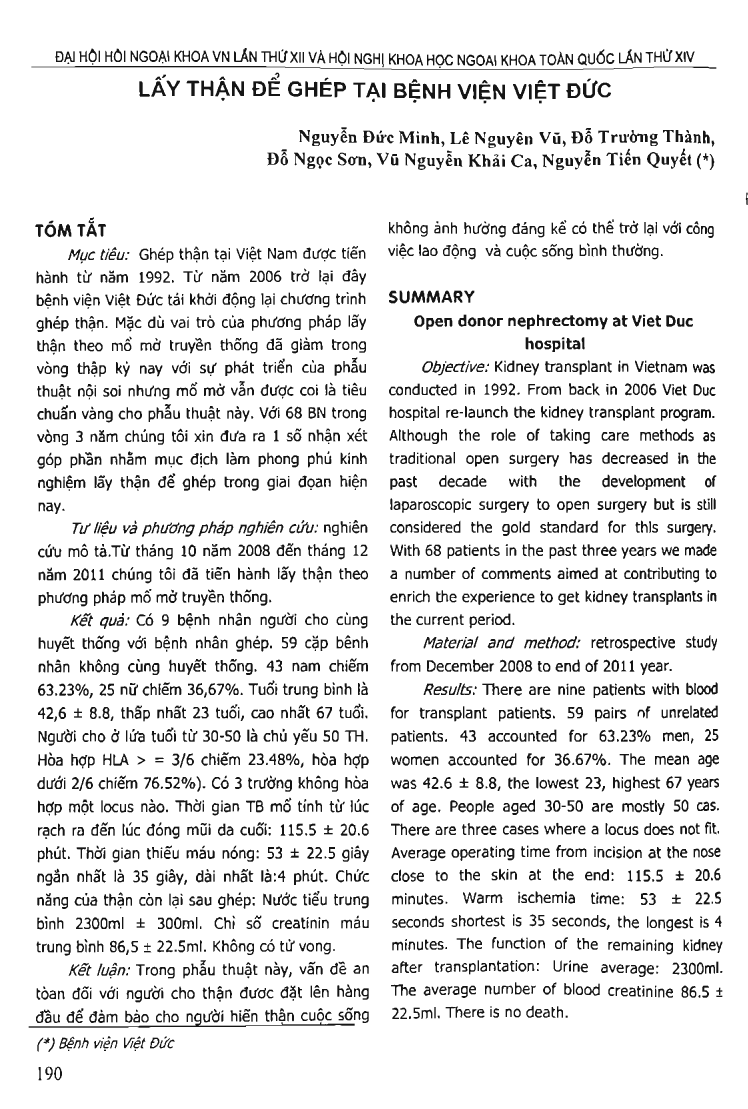
Objective: Kidney transplant in Vietnam was conducted in 1992. From back in 2006 Viet Duc hospital re-launch the kidney transplant program. Although the role of taking care methods as traditional open surgery has decreased in the past decade with the development of laparoscopic surgery to open surgery but is still considered the gold standard for this surgery. With 68 patients in the past three years we made a number of comments aimed at contributing to enrich the experience to get kidney transplants in the current period. Material and method: retrospective study from December 2008 to end of 2011 year. Results: There are nine patients with blood for transplant patients. 59 pairs of unrelated patients. 43 accounted for 63.23 percent men, 25 women accounted for 36.67 percent. The mean age was 42.6 + or - 8.8, the lowest 23, highest 67 years of age. People aged 30-50 are mostly 50 cas. There are three cases where a locus does not fit. Average operating time from incision at the nose close to the skin at the end: 115.5 + or - 20.6 minutes. Warm ischemia time: 53 + or - 22.5 seconds shortest is 35 seconds, the longest is 4 minutes. The function of the remaining kidney after transplantation: Urine average: 2300ml. The average number of blood creatinine 86.5 + or - 22.5ml. There is no death. Conclusion: in this operation, safety problems for the kidneys were placed on top to ensure the donor does not affect life can dramatically back to manual work and normal life.
- Đăng nhập để gửi ý kiến
